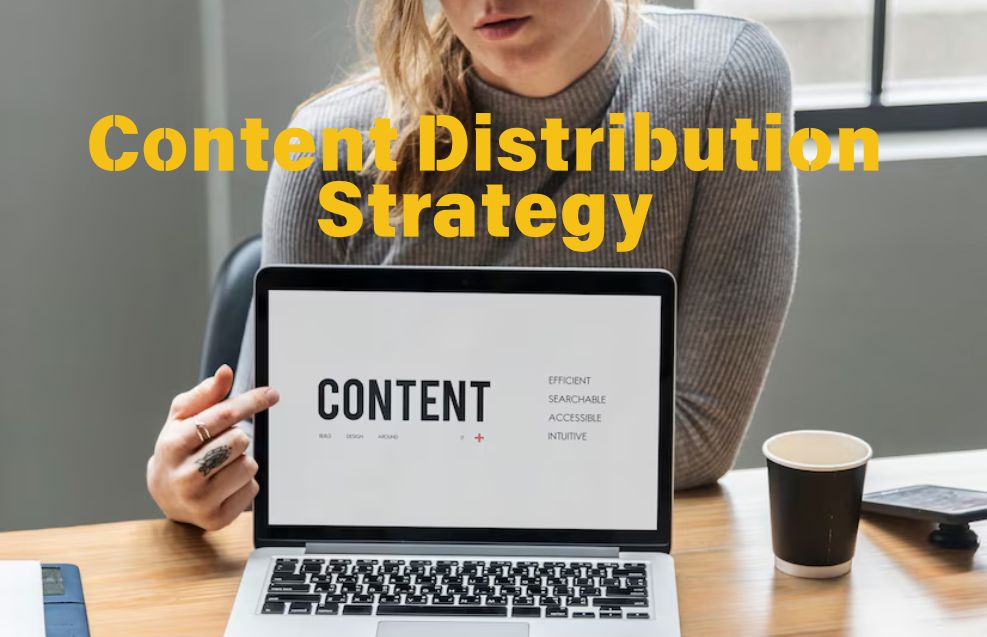Creating great content is only half the battle. To ensure your message reaches the right audience and makes an impact, you need a refined content distribution strategy. Here are some actionable steps to help you optimize your approach:
1. Understand Your Audience
Effective content distribution strategy begins with a clear understanding of your audience. Ask yourself:
- Who are they? (Demographics, interests, behaviors)
- Where do they consume content? (Social media platforms, email, blogs, forums)
- What formats do they prefer? (Videos, articles, infographics, podcasts)
Use tools like surveys, analytics, and social listening to gather insights about your audience. For example, tools like Google Analytics can reveal your audience’s geographic location, device usage, and browsing behavior, while social listening platforms like Brandwatch or Hootsuite can help you monitor discussions and sentiment around your content.
Understanding your audience also means recognizing their pain points and motivations. Conduct persona research to develop detailed profiles of your ideal customers. Include details like:
- Goals and challenges
- Preferred communication style
- Buying triggers
These insights will ensure your content resonates and reaches the right people.
2. Audit Your Current Strategy
Evaluate the effectiveness of your existing distribution channels. Key metrics to assess include:
- Engagement rates (likes, shares, comments)
- Traffic sources
- Conversion rates
- ROI of paid campaigns
Performing a content audit will also help you understand how your content is performing across platforms. Consider using a spreadsheet or a tool like SEMrush or Screaming Frog to track:
- URLs of distributed content
- Metrics such as views, clicks, and downloads
- Audience feedback or sentiment
By auditing your strategy, you can identify gaps, repurpose high-performing content, and eliminate low-value activities.
3. Diversify Your Distribution Channels
Relying on a single platform can limit your reach. Instead, explore multiple channels, such as:
- Owned media: Your website, blog, email newsletter
- Earned media: PR mentions, guest posts, influencer collaborations
- Paid media: Social ads, search ads, sponsored content
Diversification ensures you’re not overly dependent on one channel and helps reach different audience segments. For example, younger audiences might favor platforms like TikTok or Instagram, while professionals might engage more on LinkedIn or Twitter. A well-rounded strategy incorporates a mix of:
Social Media Platforms
Different platforms serve different purposes. Instagram, for instance, works well for visual storytelling, while LinkedIn caters to professional, value-driven content. Test and analyze which platforms drive the most engagement for your brand.
Email Marketing
Email remains a powerful tool for nurturing leads and maintaining audience relationships. Segmentation is key—divide your list into specific groups based on behavior, demographics, or purchase history to tailor your messages.
Partnerships
Collaborate with influencers or complementary brands to tap into new audiences. Ensure your partnerships align with your brand’s values and goals.
4. Leverage Data-Driven Insights
Use analytics to inform your strategy. Tools like Google Analytics, social media insights, and CRM data can help you understand which channels and content types are driving results. Track key performance indicators (KPIs) such as:
- Click-through rates
- Time on page
- Social shares
Heatmaps can also provide insights into how users interact with your website. Tools like Hotjar can show you where users are clicking, how far they’re scrolling, and where they’re dropping off. This data is invaluable for improving user experience and optimizing your content’s placement.
5. Optimize Content for Each Platform
Different platforms require different approaches. Tailor your content to fit the nuances of each channel:
- On Instagram, focus on visuals and reels.
- On LinkedIn, prioritize professional, value-driven content.
- For email, craft personalized and action-oriented messages.
In addition to format, timing matters. Analyze when your audience is most active on each platform and schedule posts accordingly. Most social media scheduling tools provide insights into optimal posting times based on historical data.
6. Experiment and Iterate
Testing is the cornerstone of a successful content distribution strategy. Test different formats, posting times, and messaging styles. A/B testing can help identify what resonates most with your audience. For example:
- Test headlines: Does a question or a bold statement generate more clicks?
- Test visuals: Do images or videos drive more engagement?
- Test calls-to-action (CTAs): Does “Learn More” outperform “Download Now”?
Analyze the results of your experiments and refine your strategy accordingly. Remember, content distribution isn’t static; it’s an ongoing process of learning and adapting.
7. Collaborate with Partners
Partnering with influencers, brands, or affiliates can amplify your reach. Choose collaborators who align with your brand values and have an engaged audience that matches your target demographic. For example:
- Collaborate with micro-influencers for niche audiences.
- Work with industry experts for thought leadership content.
Such partnerships can include co-hosting webinars, sharing guest posts, or running joint campaigns.
8. Automate and Schedule
Save time and ensure consistency by using scheduling tools like Buffer, Hootsuite, or HubSpot. Automating repetitive tasks allows you to focus on strategy and content creation. Additionally, tools like Zapier can help integrate different platforms, streamlining your workflow.
9. Prioritize Quality Over Quantity
While regular posting is important, it’s better to share high-quality, relevant content less frequently than to flood channels with mediocre posts. Aim to provide value with every piece you distribute. High-quality content not only attracts attention but also builds credibility and trust.
Tips for Maintaining Quality:
- Proofread meticulously to avoid errors.
- Use high-quality visuals and media.
- Ensure consistency in tone and branding.
10. Engage and Interact
Distribution isn’t just about publishing—it’s about fostering conversations. Respond to comments, participate in discussions, and build relationships with your audience to deepen engagement. For example:
- Host live Q&A sessions on social media.
- Reply to every comment or message promptly.
- Create polls or surveys to invite audience feedback.
Engagement is a two-way street, and active participation shows your audience that you value their input.
11. Repurpose Content
Maximize the lifespan of your content by repurposing it for different channels. For instance:
- Turn a blog post into a series of social media posts.
- Convert a webinar into an infographic or podcast.
- Extract quotes or statistics for standalone visuals.
Repurposing saves time while expanding your reach across platforms.
12. Measure and Refine
Finally, review your performance regularly. Look at what’s working and refine your strategy based on the data. Stay updated with emerging trends and adapt to shifts in audience behavior and platform algorithms. Monthly or quarterly performance reviews can help ensure you’re on track.
Key Questions to Ask During Reviews:
- Are we meeting our distribution goals?
- Which channels are underperforming, and why?
- What feedback are we receiving from our audience?
By answering these questions, you can make data-driven decisions to improve your strategy.
13. Stay Ahead of Trends
The digital landscape is constantly evolving. Stay informed about changes in algorithms, platform features, and audience behavior. Subscribe to industry newsletters, attend webinars, and follow thought leaders to stay ahead of the curve.
14. Integrate User-Generated Content
Encourage your audience to create and share content related to your brand. User-generated content (UGC) not only boosts authenticity but also expands your reach. Examples include:
- Customer reviews and testimonials
- Social media posts featuring your products or services
- Community challenges or contests
UGC fosters a sense of community and trust, making your audience feel like active participants in your brand’s story.
By refining your content distribution strategy, you can ensure that your hard work in creating content pays off, driving meaningful results for your brand or business. Remember, the key is to stay flexible, data-driven, and audience-focused.

